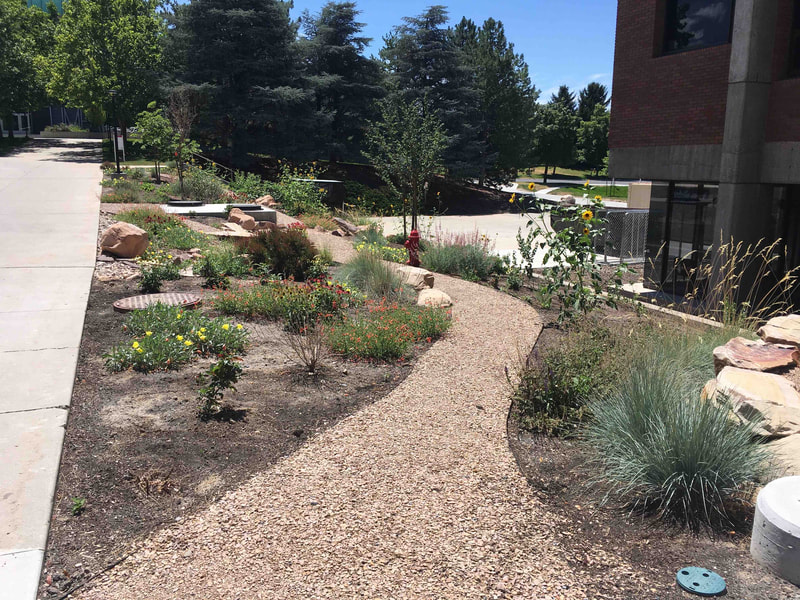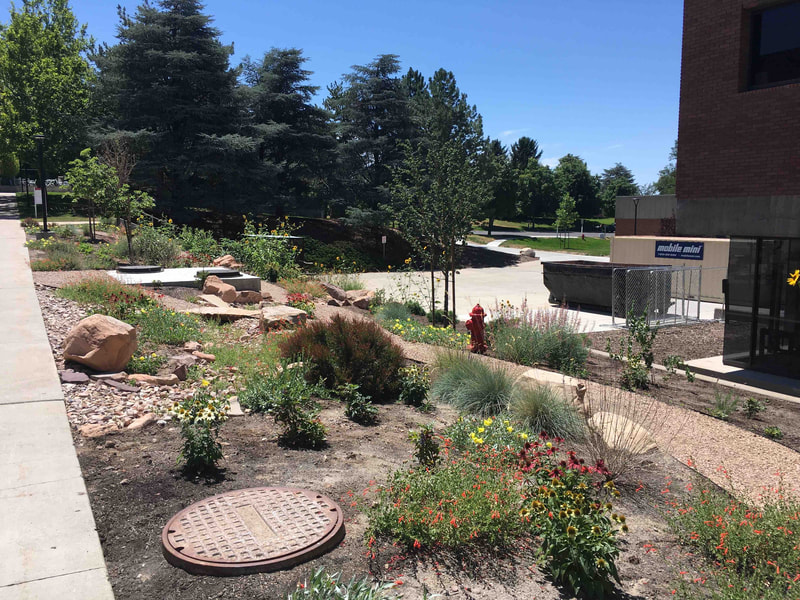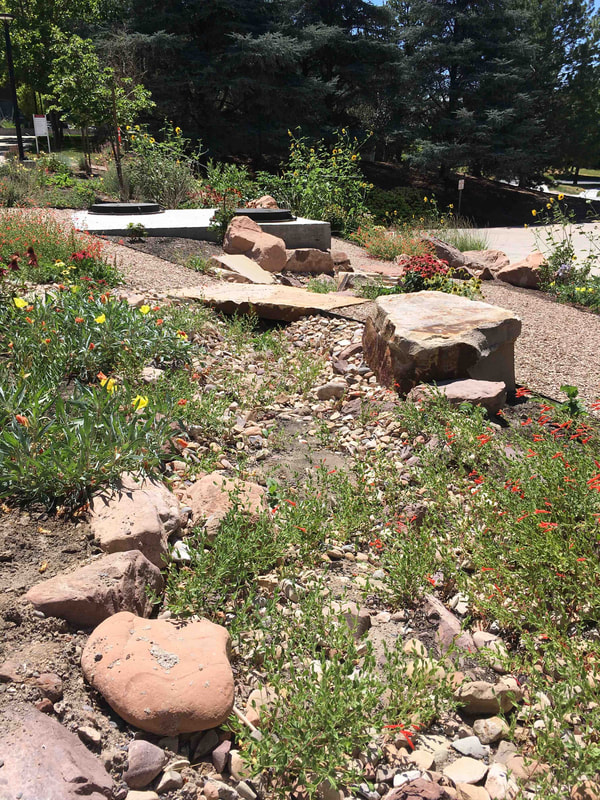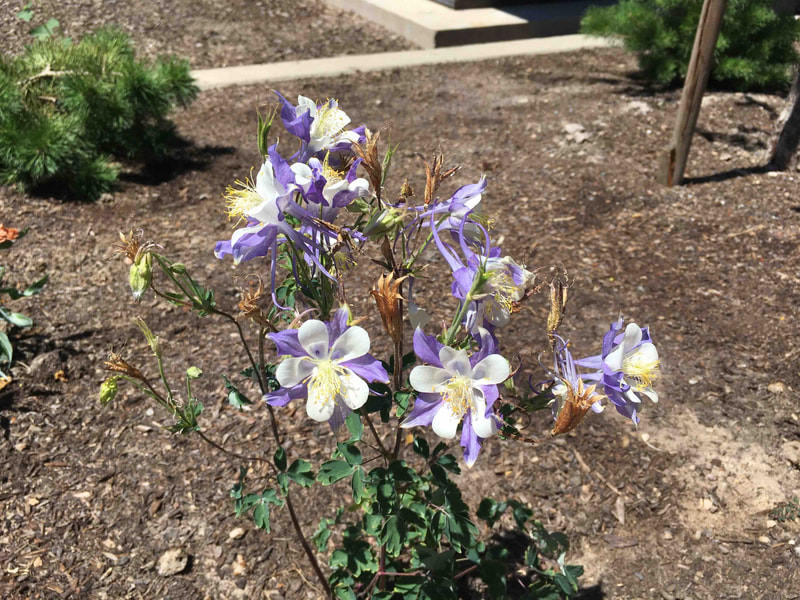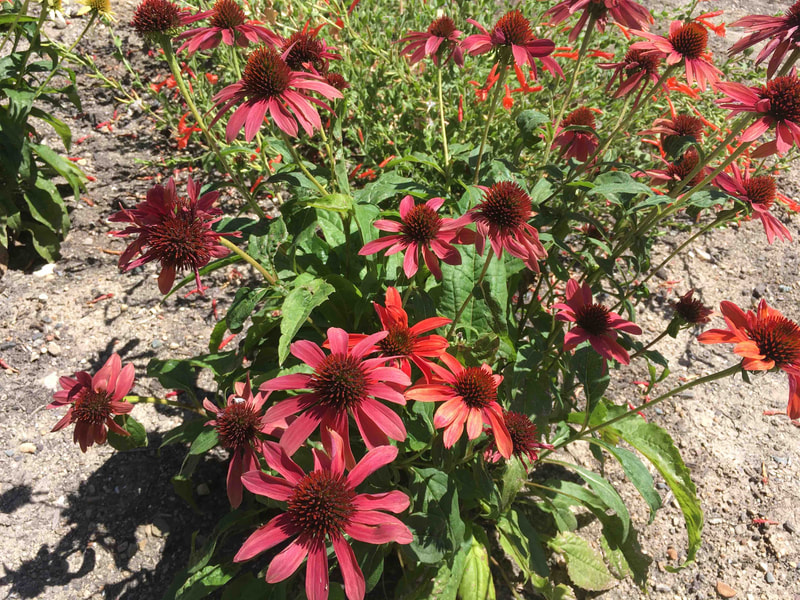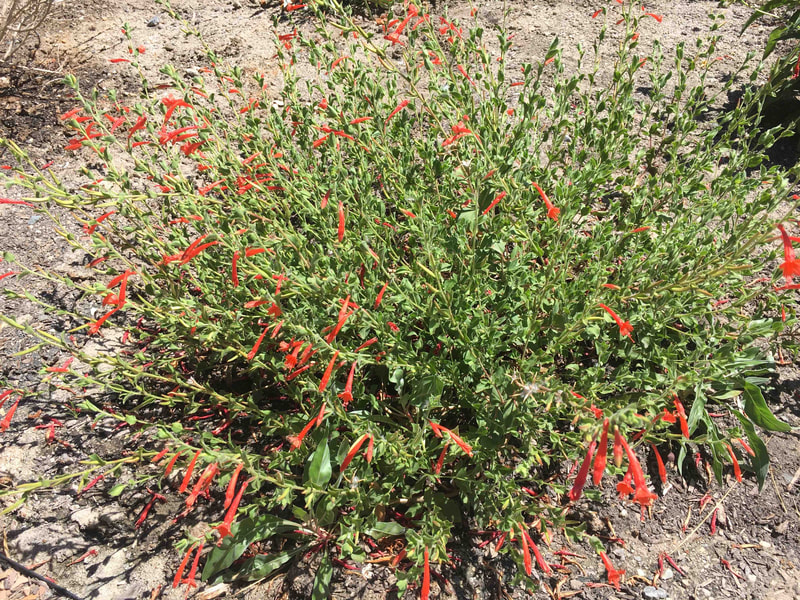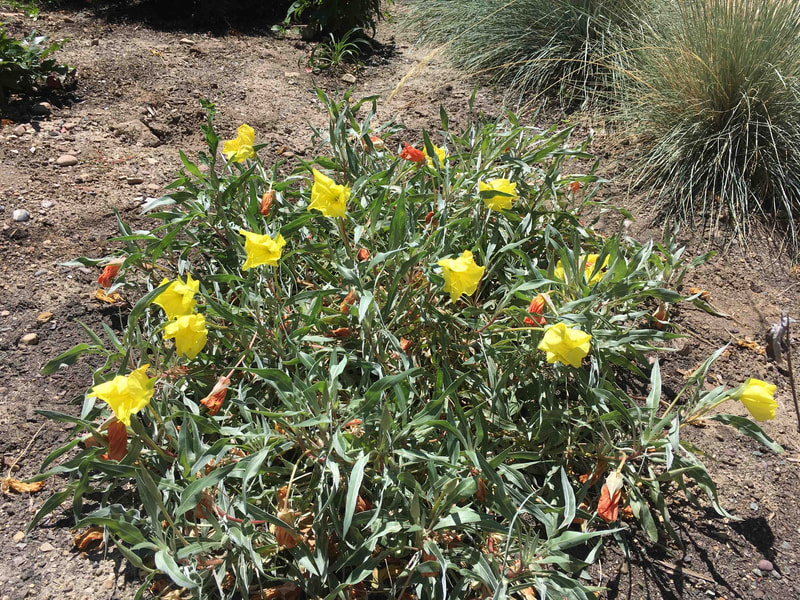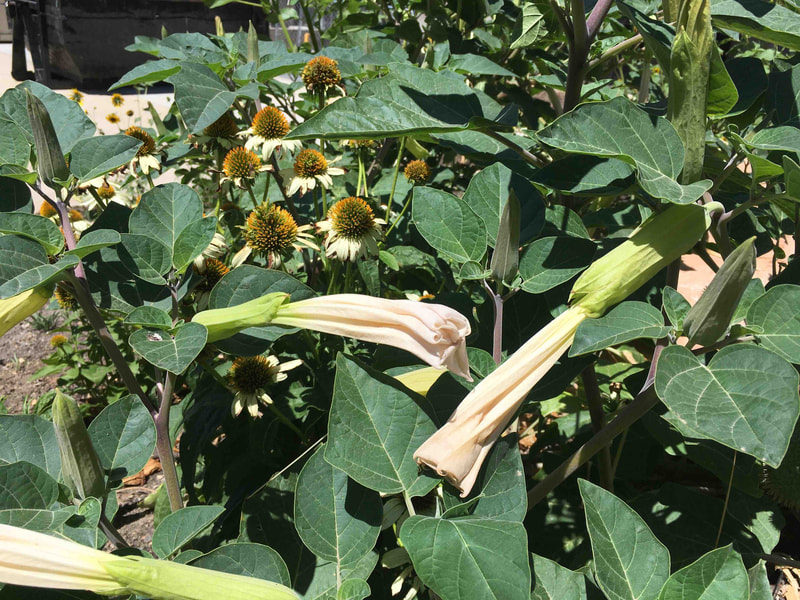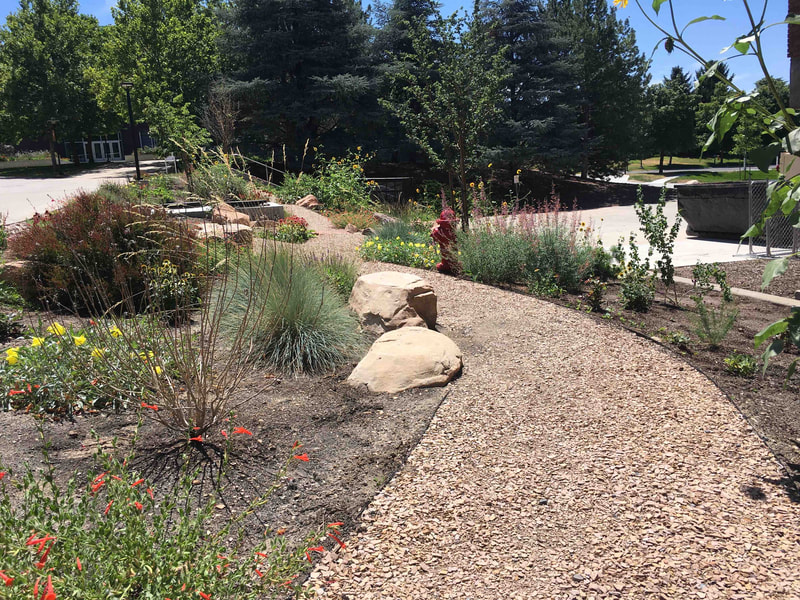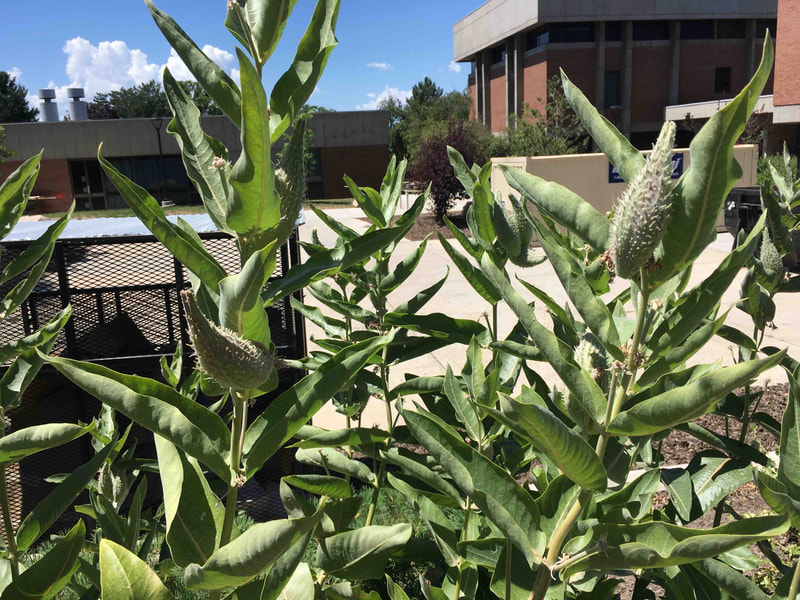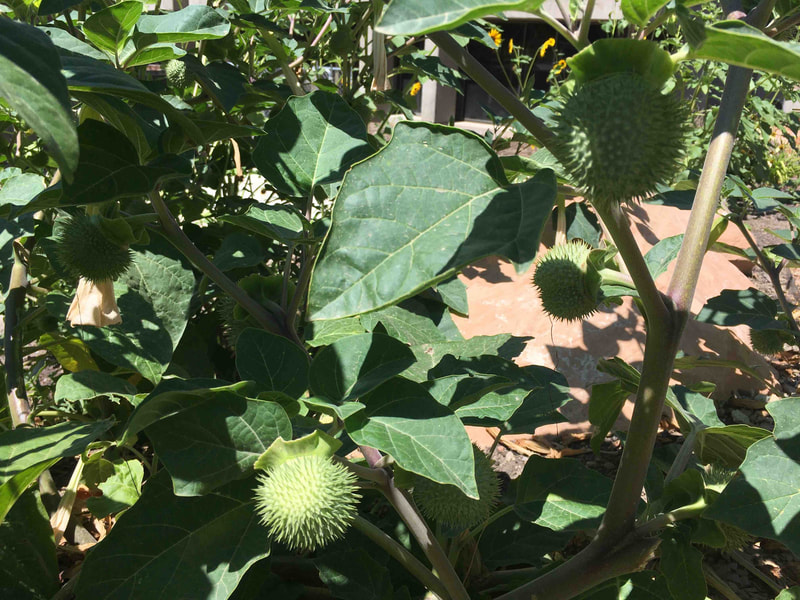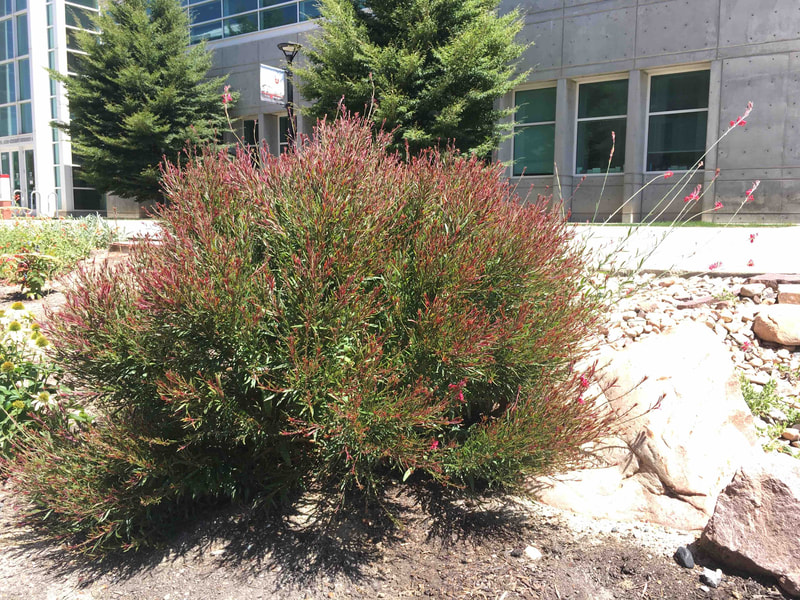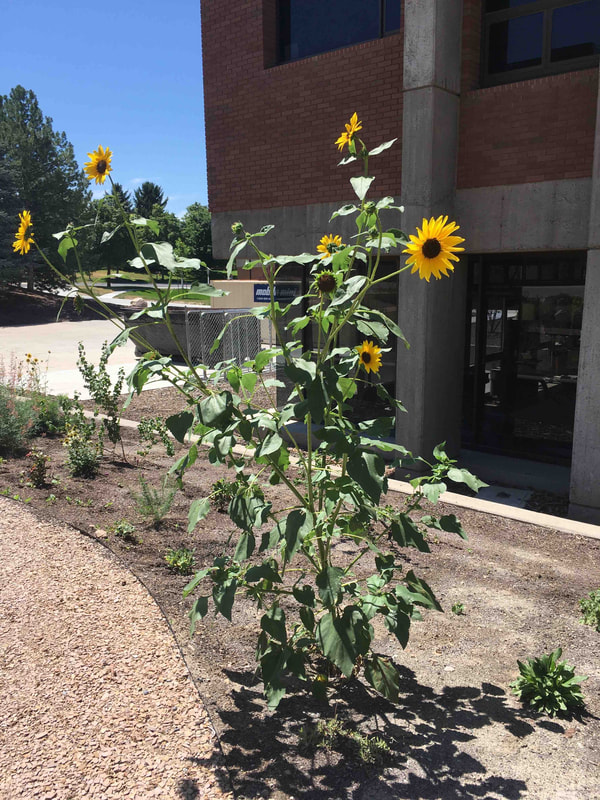Pollinator gardens as green infrastructure
One way to make our campus more ecologically sustainable is to provide resources for native bee pollinators. There are hundreds of native bee pollinators, not just the "introduced" bee that we typically think of. Providing nectar resources to these native bee species is a critical step towards developing sustainable ecosystems. The first "native pollinator" green infrastructure is located between the Business School and the College of Architecture + Planning. Click here for more details about this pollinator garden.
